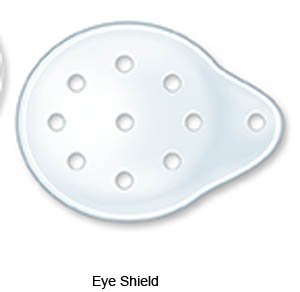Cataract Removal
Medically reviewed by Drugs.com. Last updated on Aug 4, 2025.
What do I need to know about cataract removal?
Cataract removal is a procedure to remove a cloudy lens from your eye. An artificial lens called an intraocular lens (IOL) is put in its place. This will improve your vision. The procedure is usually done on one eye at a time. Your healthcare provider will wait about 4 weeks before removing your other cataract.
How do I prepare for a cataract removal?
- Your healthcare provider will measure your eye's length and how much it curves. He or she will also check your vision. This helps him or her choose the best IOL to put in your eye when the cataract is removed.
- Your healthcare provider may tell you to stop taking anticoagulants 1 to 2 weeks before your procedure. Your provider may give you antibiotic eyedrops to use for a few days before your procedure to prevent infection. Make arrangements for someone to drive you home after your procedure.
What will happen during my procedure?
- Your healthcare provider may put drops in your eye to dilate your pupil. This makes it easier for healthcare providers to put in the IOL without damaging your eye. He or she may also use eyedrops to numb your eyes. Your healthcare provider may instead give you a shot of numbing medicine beside, under, or in your eye. You will also be given a pill to relax you and reduce your anxiety.
- After your pupil is fully dilated, a tool will hold your eye open to prevent blinking. A small incision will be made in your cornea (clear covering over your iris). A tiny instrument will be placed next to the cloudy lens. This instrument uses sound waves to break the lens into small pieces that are suctioned out. The IOL will then be placed in this area. The incision will close on its own. Antibiotic and anti-inflammatory drops may be placed in your eye.
What will happen after the procedure?
- An eye shield may be used to cover your eye and protect it from damage.

- Eyedrops will be given to help prevent infection and decrease inflammation.
What are the risks of cataract removal?
You may develop an eye infection and bleeding inside the eye. Your retina may swell, or a piece may break off. This is called detachment. You may go blind. You may develop glaucoma (increased pressure inside your eye). You may have swelling in and damage to your cornea. Sometimes the area where the IOL is placed also clouds up. This may happen months or even years after the procedure.
Care Agreement
You have the right to help plan your care. Learn about your health condition and how it may be treated. Discuss treatment options with your healthcare providers to decide what care you want to receive. You always have the right to refuse treatment. The above information is an educational aid only. It is not intended as medical advice for individual conditions or treatments. Talk to your doctor, nurse or pharmacist before following any medical regimen to see if it is safe and effective for you.© Copyright Merative 2025 Information is for End User's use only and may not be sold, redistributed or otherwise used for commercial purposes.
Further information
Always consult your healthcare provider to ensure the information displayed on this page applies to your personal circumstances.
